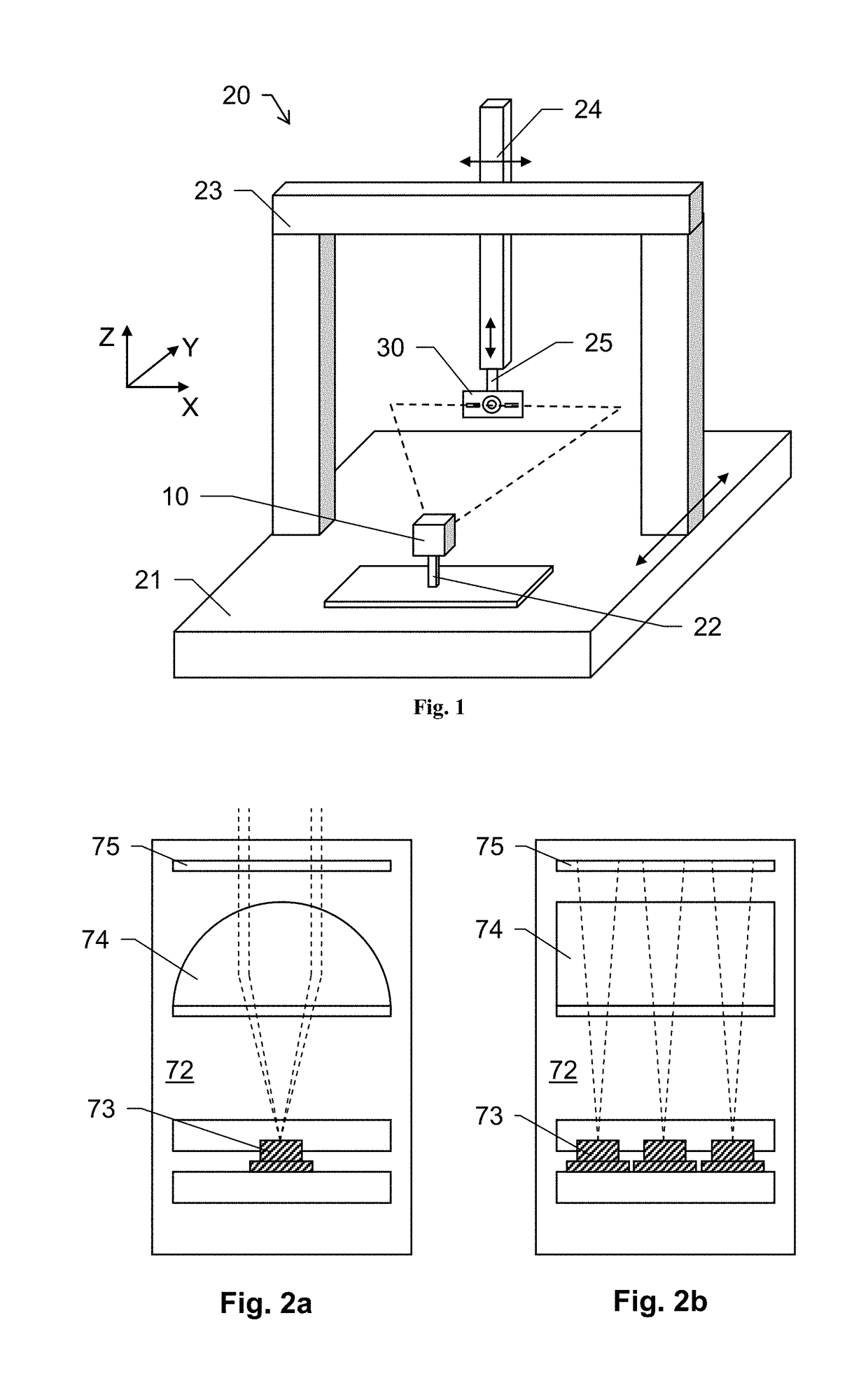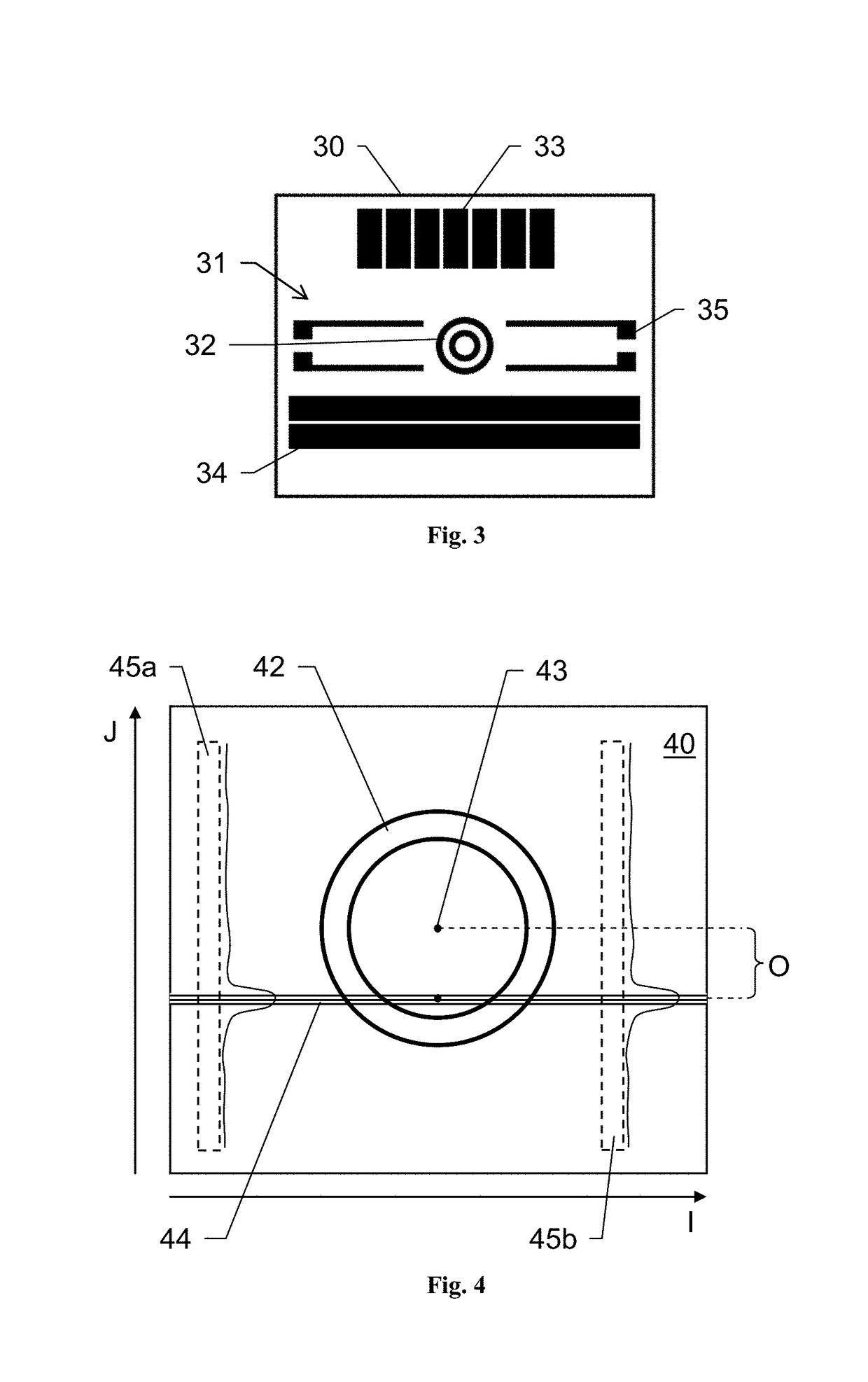Calibration of a triangulation sensor
a triangulation sensor and sensor technology, applied in the direction of measuring devices, instruments, using optical means, etc., can solve the problems of providing a usable signal over the whole width of the projected laser line, difficult to measure, and low roughness of the surface,
- Summary
- Abstract
- Description
- Claims
- Application Information
AI Technical Summary
Benefits of technology
Problems solved by technology
Method used
Image
Examples
Embodiment Construction
[0124]FIG. 1 shows a calibration embodiment according to the invention. A laser triangulation sensor 10 is arranged on the base 21 of a coordinate measuring machine 20 (CMM). A mounting unit 22 provides a reproducible mounting of such sensor 10 on the CMM 20.
[0125]The CMM 20 further comprises a frame structure having a portal 23 and a Z-ram 24 for providing movability of a probe or tool head 25 relative to the base 21. The head 25 can be moved at least in three axis X, Y, Z. The head and / or the CMM structure may further be designed so that a rotational movement of the head 25 is provided as well.
[0126]A calibration target 30 is arranged at the head 25 of the CMM 20. By that, a movement of the target 30 relative to the triangulation sensor 10 can be provided by controlling the CMM 20.
[0127]In general, the CMM 20 and the positioning of the triangulation sensor 10 at a known position on the base 21 provide a defined and known relative positioning of the two calibration elements (sensor...
PUM
 Login to View More
Login to View More Abstract
Description
Claims
Application Information
 Login to View More
Login to View More - R&D
- Intellectual Property
- Life Sciences
- Materials
- Tech Scout
- Unparalleled Data Quality
- Higher Quality Content
- 60% Fewer Hallucinations
Browse by: Latest US Patents, China's latest patents, Technical Efficacy Thesaurus, Application Domain, Technology Topic, Popular Technical Reports.
© 2025 PatSnap. All rights reserved.Legal|Privacy policy|Modern Slavery Act Transparency Statement|Sitemap|About US| Contact US: help@patsnap.com



